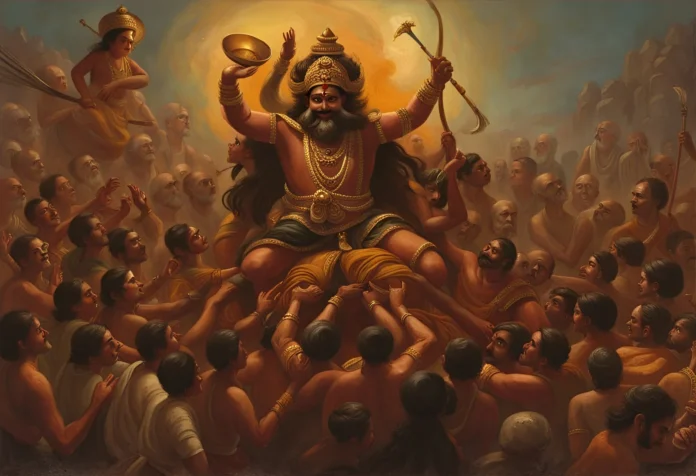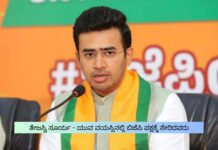Story of Ravana- English Version
Episode – 1
The soul of Indian mythology extends beyond simply good and evil. If one is willing to go deep, there is an interesting story at every stage. Ravana portrayed the villain, but why he did so is an important topic. It was actually to restore balance to the equation of good and evil. No wonder he is still revered in some parts of the world.
Ravana was the grandson of Pulastya, one of the greatest sages in Indian mythology and a Saptarishi. He was born to Sage Vishravan and Asura’s mother, Kaikashi.
As a result, he is identified as half Asur (devil) and half Brahmin (sage). Ravana is regarded as the ultimate adversary in the ancient Hindu epic Ramayana. He is portrayed as both a Rakshasa (demon) and the mighty monarch of Lanka. He is recognized as a demon with ten heads, yet few people realize that he was not born with ten heads.

Ravana was a devout disciple of Lord Shiva, an exceptional scholar, a good king, and a master of the veena (a plucked string instrument). He wrote two books: Ravana Samhita (astrology) and Arka Prakasham (Siddha medicine). He was well-versed in both Ayurveda and black magic. It is supposed that he could manipulate the planetary positions at will. He acquired a flying chariot (pushpakviman) from his stepbrother, Kuber. He had mastered tantra vidya (the science of generating optical illusions of ideas), which he used in conflicts with his opponents.
Ravana attempted to lift Mount Kailash
When Ravana attempted to lift Mount Kailash, Lord Shiva crushed his forehand beneath the mountain, prompting Ravana to chant praises to Lord Shiva and seek forgiveness. Lord Shiva was so pleased with Ravana that he began dancing with rage and passion, which is known as tandav, and the chants became known as “The Shiva Tandav Strotram”.
Ravana performed a massive tapasya (penance) on the banks of the Narmada to satisfy Lord Shiva after completing his schooling. Ravana, eager to please the Lord, annexed his head, and each time he did, the head grew back ten times, allowing him to continue his penance. Lord Shiva therefore gave Ravana ten heads that he had sacrificed. Because of these ten heads, he is also known as “Dashmukh”.
The ten heads of Ravana represent the six Shastras, which are the sacred texts of Hinduism divided into four categories: the sruti, smriti, purana, and tantra. Ravana was a renowned scholar and one of the most intelligent creatures of his era since he mastered the four Vedas. He was an expert in all armament techniques and 64 different forms of information. His Shiva Tandava stotra is still the most well-known hymn ever performed in adoration of Lord Shiva. He is credited with compiling the Veda with the pertinent musical svara (notes).
Shiva with Bramha Kapala; Lord Shiva become beggar
Ravana’s ten heads might also be interpreted as the ten emotions. These feelings are: Manas (mind), Buddhi (intellect), Chit (will), Ahamkara (ego), Mada (pride), Maatsarya (envy), Krodh (rage), Moha (delusion), Lobh (greed), and Kaam (lust).
Hindu traditions place a strong emphasis on mastering one’s senses and projecting only the mind, which is seen as superior to the other senses. The employment of other emotions is seen to be harmful to a soul’s development.
The great monarch Mahabali once counseled Ravana to reject the nine emotions and hold onto only intellect, arguing that having each quality contributes to his totality as a person. The other heads of Ravana controlled the deeds that ultimately resulted in his annihilation, but the one head of Buddhi controlled his destiny. Eventually, he gave in to his senses and, unable to restrain his cravings,
He not only ruined his tribe and himself, but he also put all of Lanka to ashes. One of his greatest regrets as he lay dying on the battlefield was having all this information and not being able to use it. He felt that his failure to put his life’s lessons into practice ultimately contributed to his collapse.
Continues …….

 Support Us
Support Us 


